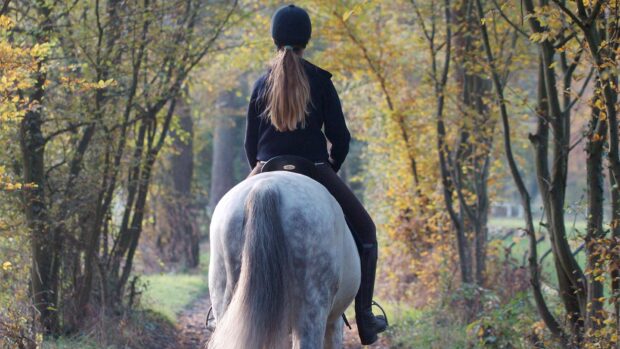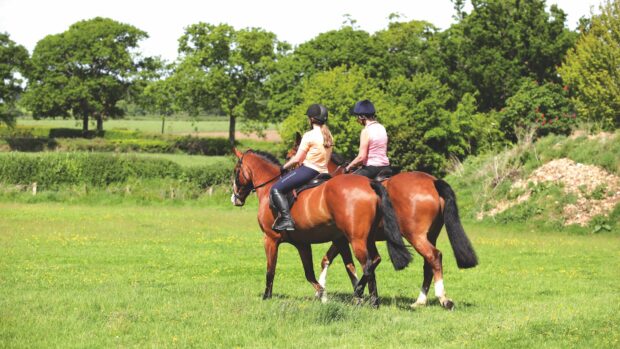If you’re getting bored with riding around your local area, then it could be time to venture further afield – enter, equestrian orienteering. Most of us tend to stick to routes we know, but that means you could be missing out.
There may be bridleways in your area you’re not aware of, or if you have transport you can look for rides further afield. Check out the BHS Ride Maps website, your local County Council website or tourist websites for ideas.
The first thing you’ll need is an Ordnance Survey Explorer map, with a scale of 1:25,000. Ordnance Survey also have an app available, and there are other route planning apps as well – but there’s no substitute for a paper map in case you run out of phone battery or find yourself in an area with no signal.
Next, you need to learn how to read the map! This is simpler than you might think, but it’s helpful to have a friend to show you the basics. The resources section of the Ordnance Survey website has a beginners’ guide available for free download. You can’t ride on footpaths but you can use bridleways which can also be used by walkers and cyclists, restricted byways, and byways, which vehicles can use. You’ll quickly learn to spot good navigation points, such as churches, pubs, lakes and railways. Carrying a compass and knowing how to use it can also be helpful, especially in poor visibility.
If you’re planning to ride in open countryside, it’s a good idea to do some preparation beforehand in case you encounter any hazards. You’ll need to be able to open a gate, get on from the ground and possibly cross a ford or a field with cattle in it.
Laureen Roberts, founder of bridleways group North Cheshire Riders and creator of Laureen’s Ride, a 56km long-distance route in Cheshire, says: “Before you set out on your horse for the first time try walking on the paths you’d like to ride, as not all bridleways are good to ride. Does the bridleway come out on a busy main road? If you’re planning to box to the start of your ride, it’s best to scope out parking in advance to make sure there’s room for a horsebox. Laybys on quiet roads can be useful, or ask a pub if you can use the car park so long as you have a coffee or a snack before you go.
“If you meet an obstruction, please report it to the Council Rights of Way department via an online report form, which helps to keep the path open and safe for everyone.”
Julia McHugh, former chair of the BHS Cheshire committee and owner of Your Horse is Your Mirror, which offers equestrian orienteering on horseback training and bespoke experience days, says: “First and foremost safety always comes first when hacking, so before you try your hand at map reading, make sure you are confident riding out in general. Always let someone know where you are going and what time to expect you back, and who to contact if you don’t return within a certain time limit. I’d recommend you do the BHS Ride Safe Assessment as well, you can find details on the BHS website.
“Before you try exploring, get a map of a ride you know well, and a compass. Learn how your familiar ride looks on the map, then you will start to feel more confident about hacking somewhere you don’t know. To work out how far your ride is, every 4cm on the Explorer map is 1km. If you know what speed your horse walks and trots, then you can plan a ride and work out how long it will take you.
“You will need a map case for your map, and you and your horse need to get used to carrying it. I never wear a map case around my neck, it’s likely to twist around and strangle you! I wear mine like a bag across my shoulder and chest so it’s easy to read and doesn’t flap and scare my horse.”
Depending on how long you’re going to be out, it’s also a good idea to carry a drink, a fully-charged mobile phone and a hoofpick. Above all, have fun and enjoy some of the fantastic riding available across the UK.
For all the latest equestrian news and reports, don’t miss Horse & Hound magazine, out every Thursday
You might also be interested in:

Try something new – endurance riding

Try something new – pleasure rides

Try something new – TREC

Subscribe to Horse & Hound magazine today – and enjoy unlimited website access all year round




